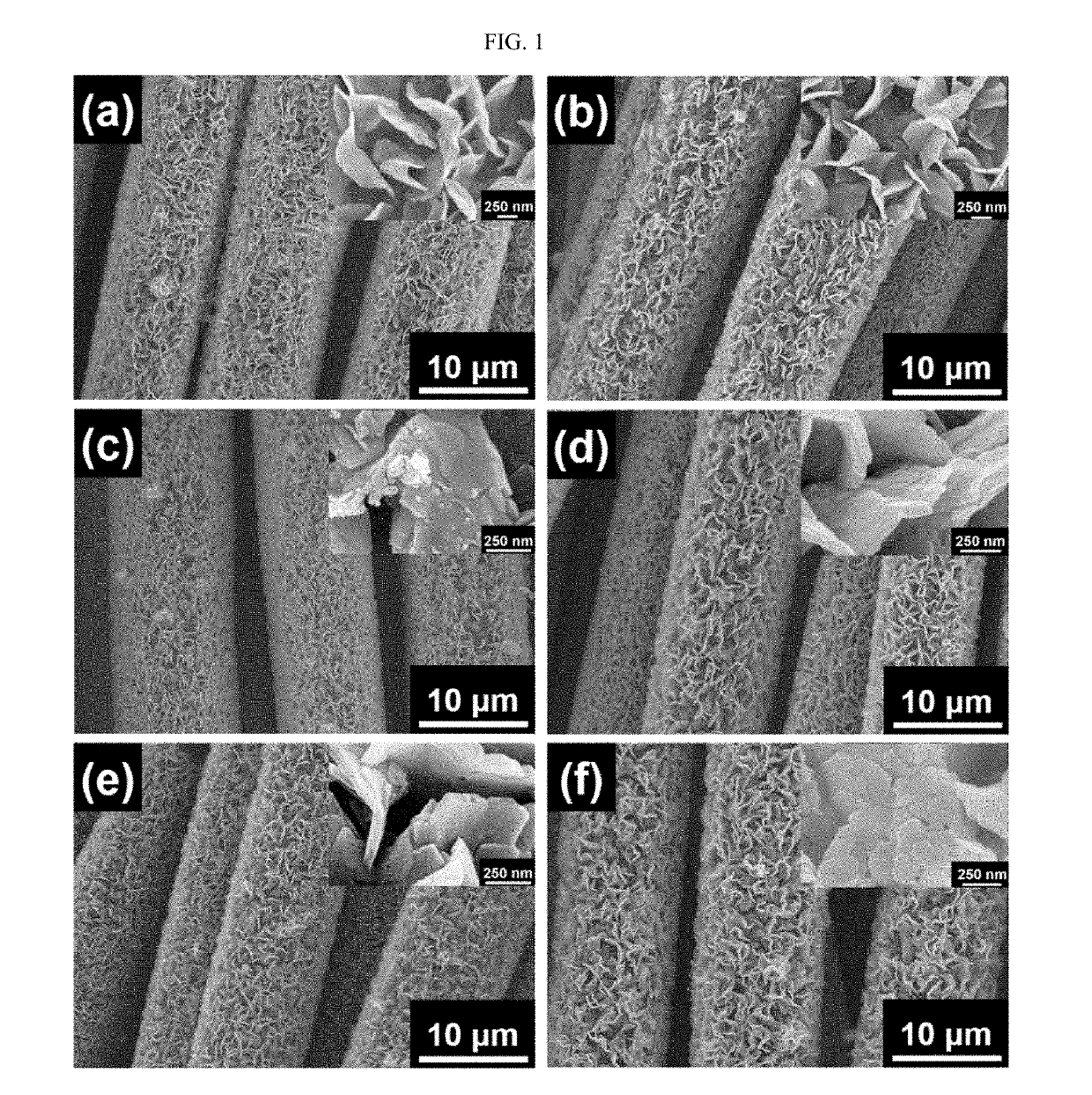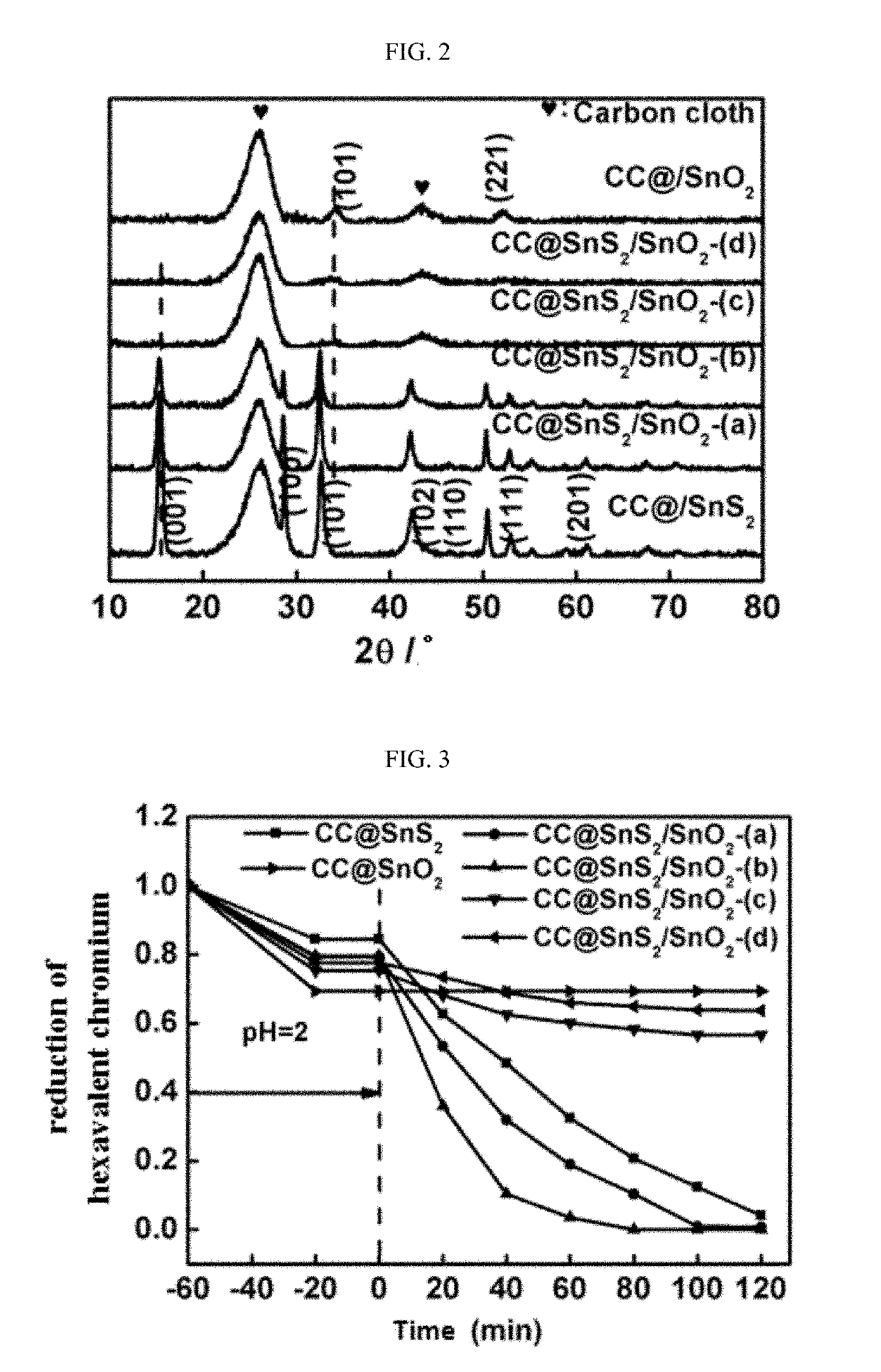Preparation method of a visible-light-driven cc@sns2/sno2 composite catalyst, and application thereof
a composite catalyst and visible light technology, applied in the field of organic functional materials, can solve the problems of high water solubility, endanger human health and life safety, and look for cheap, efficient and energy-saving methods for degradation of chromium wastewater, and achieve low preparation cost, simple preparation process, and abundant source of materials
- Summary
- Abstract
- Description
- Claims
- Application Information
AI Technical Summary
Benefits of technology
Problems solved by technology
Method used
Image
Examples
Embodiment Construction
[0024]The invention will be further described according to the following specific implementations.
Implementation 1
Synthesis of CC@SnS2
[0025]1.6 mmol SnCl4.5H2O is added in a reaction kettle including 30 mL isopropanol and stirred till dissolved. Adding 6 mmol C2H5NS and stirring for 30 min. After that, a piece of carbon fiber cloth of 2×2 cm2 is immersed in the kettle standing against the wall, and the kettle is heated at 180° C. for 24 h in an oven. After cooling to room temperature, the product is collected and rinsed with deionized water and ethanol repeatedly and finally dried in an oven at 60° C.
[0026]In order to observe the morphology of the composite material, the product prepared by this implementation is characterized by SEM. FIG. 1 is a SEM image of a visible light-responsive CC@SnS2 catalyst prepared in this implementation. (a) is CC@SnS2 catalyst prepared in this implementation.
Implementation 2
Synthesis of CC@SnS2 / SnO2
[0027]The prepared product of implementation 1 is p...
PUM
| Property | Measurement | Unit |
|---|---|---|
| Temperature | aaaaa | aaaaa |
| Temperature | aaaaa | aaaaa |
| Time | aaaaa | aaaaa |
Abstract
Description
Claims
Application Information
 Login to View More
Login to View More - R&D
- Intellectual Property
- Life Sciences
- Materials
- Tech Scout
- Unparalleled Data Quality
- Higher Quality Content
- 60% Fewer Hallucinations
Browse by: Latest US Patents, China's latest patents, Technical Efficacy Thesaurus, Application Domain, Technology Topic, Popular Technical Reports.
© 2025 PatSnap. All rights reserved.Legal|Privacy policy|Modern Slavery Act Transparency Statement|Sitemap|About US| Contact US: help@patsnap.com



